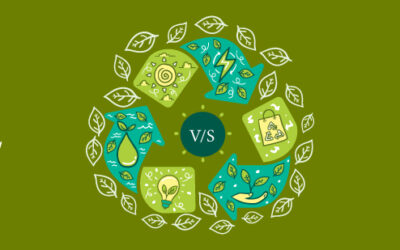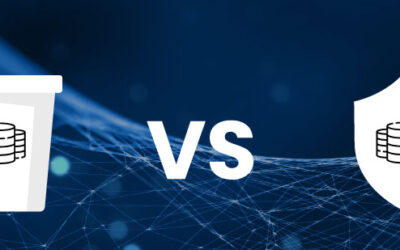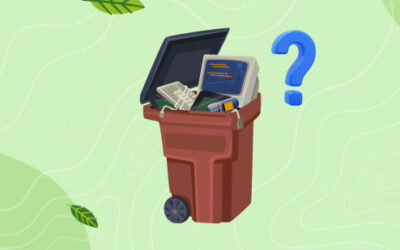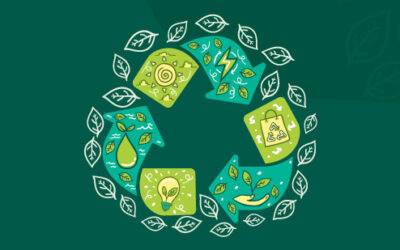How are Old Electronics Recycled? A Complete Guide to E-Waste Recycling
Introduction:
Wondering, how are electronics recycled? Needless to say, electronics are an integral part of human life and the newer updates and technologies are developed everyday and so is the waste generated by their usage. The old, used and damaged equipment needs to be recycled and disposed of with proper care so that we can recycle the usable materials and treat chemical components before blindly filling the landfills. The e-waste includes small parts, toxic metals and harmful chemical compounds in them, which when left unsorted or untreated, may make their way into the environment proving hazardous to plants, animals and humans. To some extent you can sort your e-waste but for bulk quantities, you may need professional help. It’s crucial to dispose of e-waste separately and in a safe location. Need help with IT waste management? ItPickup is here to help you wisely dispose of the waste in an environmentally compliant way, offering services all over India.
Why is e-waste (electronic waste)recycling so crucial?
It’s highly important to recycle the e-waste to keep the toxic chemicals, minute parts, glass, etc. away from landfills and water sources. E waste recycling process also involves retracting and re-using valuable metals like gold, platinum, copper, aluminum, etc, to reduce overall consumption and protect the environment.
Repercussions of Not Recycling E-waste
When e-waste is not recycled properly, metals such as mercury, lead, lithium, barium and similar compounds find their way into soil, water and air. So, e-waste should be recycled, reused, treated and disposed of suitably to avoid environmental and health risks.
Benefits of e-waste Recycling
E scrap sorting can help us separate reusable parts and precious metals that can help lower the demand for raw materials. E waste recycling reduces environmental pollution and generates jobs in this sector. One can also cash in by selling e-waste to certified handlers.
What are the complications involved in recycling e-waste?
Some of the companies don’t have access to the right equipment and lack adequate knowledge and staff to dispose of and recycle e-waste. This is not an issue anymore, as certified and experienced E-waste management companies like ItPickup can help you safely manage and discard your e-waste.
Process for Disposal of E-Waste
Electronic recycling process necessitates segregation and sorting of components and various parts and then reuse or refurbish them into new products and eliminate the waste safely.
1. Gathering E-waste
E-waste is collected from various sources through collection bins in general but we at Itpickup collect the waste from the client’s location on request. Servers, laptops, computers, circuit boards, hard-disks, storage and other electronic devices and parts are gathered.
2.Transportation of E-waste
All kinds of bulk assets are picked up, are carefully packed and then transported to our warehouses where we proceed with the rest of the recycling process. You can save up the transportation costs as we don’t charge for pickup and transfer.
3.E-waste Shredding
E-waste is shredded into smaller components using shredders after which they are sorted mechanically or manually. Care should be taken not to shred all materials, for example, batteries, lights, cartridges, glass components, etc. should not be shredded.
4.Sorting Of E-Waste
After shredding, materials are sorted into different categories like core material and parts that can be reused, and components that require further recycling. Tiny components are sorted by hand and certain parts are also dismantled manually.
5.Extraction of Dust
The shredded material is placed on the conveyor belt and shaken, which causes tiny waste particles to spread evenly. This spread of tiny pieces is further broken down. The dust generated at this point is collected and discarded in a safe and compliant manner.
6.Magnetic Distillation
In this step, Iron and steel components are separated from each other using a strong magnet. Other mechanical processes are also used to separate other metallic components like copper, aluminum, brass, etc., leaving only non-metallic components.
7.Water Distillation
The next step in the e-waste recycling process is water distillation that separates glass and plastic. The separated glass and other materials can be processed at the smelter and used as raw material for production of x- ray tubes, bulbs, batteries, CRTs, etc.
8.Filtration
This is followed by filtration using various layers of filter to remove other leftover materials and components from the water stream. This further purifies the water stream before the chemical treatment.
9.Preparing for Sale
The final step involves preparing the separated components for reusing and selling them as raw materials. Metals like gold, copper, aluminum, steel parts, circuit boards, storage devices, etc. obtained from sorting can be sold in the market again after refurbishment.
Recycle your Electronics with ItPickup
Bulk IT disposal is much easier and cost-effective with us. We accept all kinds of outdated, used and damaged electronic equipment and we offer good cash returns to you after the inventory assessment by our staff. ItPickup is also a CPCB and KSPCB authorized E-waste management service provider with a recycling facility.




